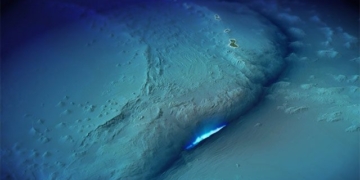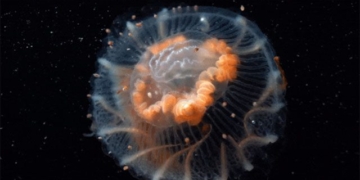Researchers believe that kyawthuite and painite are the rarest minerals on Earth. More importantly, both can only be found in Myanmar.
Minerals are scattered all over the planet, from sparkling flecks in gravel or sand to actual gems hidden beneath. According to the American Geological Society, minerals are elements or inorganic compounds that occur naturally and do not contain carbon.
Each type of mineral is a unique assembly in its formation structure and possesses some extremely interesting chemical components. As a result, the crystal form of the mineral, as well as its other physical properties, varies greatly, contributing to its uniqueness and rarity.
Many have witnessed the mysterious beauty of quartz and even considered them to be the rarest minerals on Earth.
Super Rare Minerals
However, according to Live Science, the rarest mineral on Earth is recognized as kyawthuite. To date, researchers are only aware of a single kyawthuite crystal found in the Mogok region of Myanmar.
The mineral database of the California Institute of Technology (Caltech) describes kyawthuite as a small, deep orange gemstone weighing 1.61 carats, which was officially recognized by the International Mineralogical Association in 2015.
However, due to the limited samples, researchers have yet to find much information about the structure and composition of kyawthuite.

The only kyawthuite ever found on Earth. (Photo: Los Angeles Natural History Museum).
Notably, in addition to kyawthuite, the second rarest mineral in the world is also found in Myanmar, known as painite, which appears as dark red hexagonal crystals.
Although painite is now easier to find than before, this mineral remains extremely rare, and its chemical structure still poses a scientific mystery.
According to George Rossman, a mineralogy professor at Caltech who has studied painite since the 1980s, in 1952, British gem collector Arthur Pain acquired two red stones in Myanmar.

Painite is extremely rare and has been priced up to $60,000 per carat, with fewer blemishes being more valuable. (Photo: Geology In).
At that time, Pain thought these crystals were merely rubies, which are very famous in Myanmar, and had no idea they were actually something much rarer.
The name painite was later assigned to this rare mineral in honor of Arthur’s surname. Mistaking it for rubies, this collector eventually donated the stones to the British Museum in 1954 for further study.
In 1979, another specimen was found in Myanmar. By 2001, these were the three known painite specimens in the world.
Painite then became more common, and crystals began to appear more frequently, especially in 2005. Most painite currently can be found in the Wet Loo and Therein Taung regions of Myanmar.
The painite specimen owned by Arthur Pain was later analyzed by Rossman and officially published in the journal Mineralogy in 2018.
In the study, Rossman discovered that there had been an error in the original chemical composition identified by scientists at the British Museum. While they accurately identified aluminum, boron, calcium, and oxygen, the element zirconium was missing.
Additionally, Rossman found a small amount of vanadium and chromium in painite. This explains why this mineral has a deep red color similar to rubies.

A small amount of vanadium and chromium in painite gives this mineral its deep red color like rubies. (Photo: Luxe).
Besides being found only in Myanmar, the real reason painite is extremely rare lies in its formation. Specifically, painite is a borate crystal, meaning it contains boron.
Theoretically, boron is extremely difficult to combine with zirconium. However, painite is the only mineral where these two elements can combine naturally. This remains a mystery that researchers have yet to uncover the reason for.
Rossman also added that zirconium and boron cannot coexist in such high densities. Moreover, their state when near each other is also unstable compared to combinations with other elements.
Why Myanmar?
Rossman also questions why painite and many other gemstones, such as kyawthuite, are found only in Myanmar.
When the ancient supercontinent Gondwana began to separate about 180 million years ago, India moved northward and collided with the area now known as South Asia. The pressure and heat from this collision formed a treasure trove of extremely rare minerals, many of which are gemstones.
With this hypothesis, Rossman suggests that the boron in painite and other borate minerals may have originated from shallow seas surrounding the newly formed landmass.
The Caltech professor noted that many gem specimens have been sent to him to determine if they are painite. Some have even been kept for decades, as these gemstones are often stored in rough gem bags or misidentified by dealers and collectors.
Rossman stated that it is very difficult to find suitable painite for luxurious jewelry due to their extreme rarity and high prices, which can reach up to $60,000 per carat, with fewer blemishes being more valuable.

The pressure and heat from the collision when the ancient supercontinent Gondwana began to separate around 180 million years ago formed a treasure trove of extremely rare minerals, many of which are gemstones. (Photo: AAP).
Additionally, there are still ethical concerns regarding mining in Myanmar, which is also famous for many other types of gemstones and specimens of tiny prehistoric organisms trapped in amber.


















































